When it comes to the ever-evolving landscape of electric and hybrid SUVs, the comparison between the BYD Seal U and the Skoda Elroq reveals a fascinating clash of innovation and performance. Both cars cater to the modern driver's needs with a blend of technology, efficiency, and style, making them worthy competitors in the market. In this article, we will dive into various aspects of these vehicles, including technical specifications, innovations, and performance metrics.
BYD Seal U vs Skoda Elroq – Which car suits you better?
Two cars, one duel: BYD Seal U meets Skoda Elroq.
Which one wins in performance, efficiency and value for money? Find out now!
Overview of BYD Seal U
The BYD Seal U is a versatile SUV that boasts an array of engine types, including electric and plug-in hybrid options. The car features a sleek design with a focus on aerodynamics and functionality, providing a comfortable ride for up to five passengers. With a curb weight between 1940 kg and 2147 kg, the Seal U manages to combine performance with efficiency.
Technical Specifications of BYD Seal U
- Engine Type: Plug-in Hybrid and Electric
- Power Options: 218 HP (160 kW) to 324 HP (238 kW)
- Torque: up to 550 Nm
- Transmission: CVT and Reduction Gearbox
- Drive Type: Front-Wheel Drive and All-Wheel Drive
- Electric Range: up to 500 km
- Acceleration (0-100 km/h): 5.9 to 9.6 seconds
- Max Speed: 170 km/h to 180 km/h
- Battery Consumption: 19.9 kWh/100km to 20.5 kWh/100km
Innovation and Features of BYD Seal U
BYD continues to push the envelope by integrating advanced battery technologies, resulting in impressive electric ranges and reduced charging times. The Seal U is equipped with a 60-liter fuel tank in hybrid variants and offers significant trunk space, ranging from 425 L to 552 L. With a focus on a low CO2 emission profile (as low as 0 g/km for electric variants), the Seal U is an attractive option for eco-conscious buyers.
Overview of Skoda Elroq
The Skoda Elroq enters the arena as a competitively styled SUV focused purely on electric propulsion. Available in options boasting up to 285 HP (210 kW), the Elroq stands tall with a slightly larger curb weight ranging from 1949 kg to 2119 kg. Designed with practicality in mind, the Elroq also accommodates five passengers with ample space.
Technical Specifications of Skoda Elroq
- Engine Type: Electric
- Power Options: 170 HP (125 kW) to 285 HP (210 kW)
- Torque: up to 545 Nm
- Transmission: Reduction Gearbox
- Drive Type: Rear-Wheel Drive
- Electric Range: up to 580 km
- Acceleration (0-100 km/h): 6.6 to 9 seconds
- Max Speed: 160 km/h to 180 km/h
- Battery Capacity: 52 kWh to 77 kWh
Innovation and Features of Skoda Elroq
The Skoda Elroq sets itself apart with its excellent energy efficiency, boasting a consumption rate as low as 15.2 kWh/100km. Coupled with cutting-edge technology for battery management, the Elroq ensures drivers get the most out of each charge, with an electric range stretching up to 580 km. The vehicle not only emphasizes sustainability with zero CO2 emissions but also focuses on enhancing passengers' comfort with a 470 L trunk space.
Comparative Analysis
When comparing the BYD Seal U and Skoda Elroq, one must consider their respective strengths. The Seal U appeals to consumers interested in hybrid options, more power, and the added versatility of all-wheel-drive configurations. Meanwhile, the Elroq shines with its outstanding electric range and efficiency, ideal for those who prioritize a fully electric lifestyle. While the Seal U has a slight edge in power and cargo capacity, the Elroq’s technological advancements and emissions efficiency make it a strong contender.
Conclusion
Both the BYD Seal U and Skoda Elroq push the boundaries of what modern SUVs can offer. With distinct approaches to powertrains and efficiency, they cater to varied customer needs—from the flexibility of hybrid energy to the commitment of all-electric driving. As the automotive industry continues to transition towards cleaner technologies, consumers will undoubtedly benefit from the competition and innovations these models present.
Video - Skoda Elroq
Here’s where it gets real: The technical differences in detail
Costs and Efficiency:
When it comes to price and running costs, the biggest differences usually appear. This is often where you see which car fits your budget better in the long run.
Skoda Elroq has a a bit advantage in terms of price – it starts at 29100 £, while the BYD Seal U costs 34300 £. That’s a price difference of around 5220 £.
In terms of energy consumption, the advantage goes to the Skoda Elroq: with 15.20 kWh per 100 km, it’s clearly perceptible more efficient than the BYD Seal U with 19.90 kWh. That’s a difference of about 4.70 kWh.
As for range, the Skoda Elroq performs somewhat better – achieving up to 573 km, about 73 km more than the BYD Seal U.
Engine and Performance:
Power, torque and acceleration are the classic benchmarks for car enthusiasts – and here, some clear differences start to show.
When it comes to engine power, the Skoda Elroq has a slight edge – offering 340 HP compared to 324 HP. That’s roughly 16 HP more horsepower.
In acceleration from 0 to 100 km/h, the Skoda Elroq is hardly perceptible quicker – completing the sprint in 5.40 s, while the BYD Seal U takes 5.90 s. That’s about 0.50 s faster.
There’s no difference in top speed – both reach 180 km/h.
There’s also a difference in torque: Skoda Elroq pulls slightly stronger with 679 Nm compared to 550 Nm. That’s about 129 Nm difference.
Space and Everyday Use:
Whether family car or daily driver – which one offers more room, flexibility and comfort?
Both vehicles offer seating for 5 people.
In curb weight, BYD Seal U is barely noticeable lighter – 1940 kg compared to 1953 kg. The difference is around 13 kg.
In terms of boot space, the BYD Seal U offers somewhat more room – 552 L compared to 470 L. That’s a difference of about 82 L.
In maximum load capacity, the Skoda Elroq performs barely noticeable better – up to 1580 L, which is about 115 L more than the BYD Seal U.
When it comes to payload, Skoda Elroq evident takes the win – 531 kg compared to 410 kg. That’s a difference of about 121 kg.
Who wins the race?
The Skoda Elroq proves to be dominates this comparison and therefore becomes our DriveDuel Champion!
Skoda Elroq is the better all-rounder in this comparison.
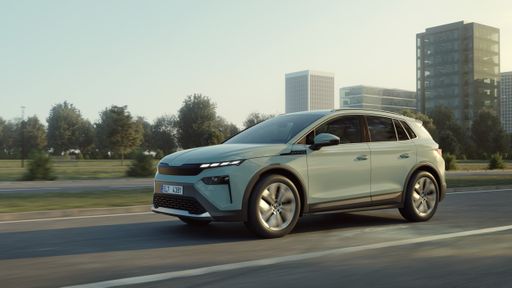 @ Škoda Auto a.s. / Škoda Storyboard
@ Škoda Auto a.s. / Škoda Storyboard
Skoda Elroq
BYD Seal U
The BYD Seal U pairs a sleek fastback silhouette with a surprisingly roomy, tech-rich cabin, giving electric chic without the showroom pretension. It's a smart pick for buyers after confident handling, sensible practicality and standout value — all wrapped up with a cheeky grin when you put your foot down.
details @ BYD Auto / BYD Global Media
@ BYD Auto / BYD Global Media
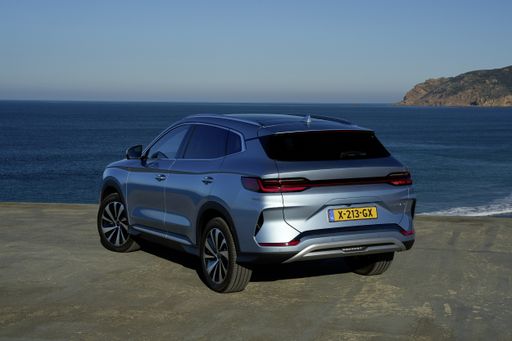 @ BYD Auto / BYD Global Media
@ BYD Auto / BYD Global Media
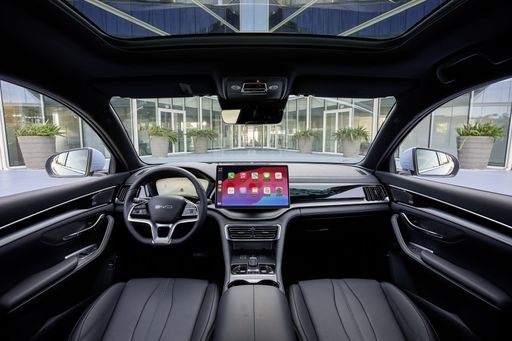 @ BYD Auto / BYD Global Media
@ BYD Auto / BYD Global Media
Skoda Elroq
The Skoda Elroq is a cleverly packaged family SUV that mixes roomy practicality with sharp, modern looks, making it an easy pick for buyers who prefer common sense over flash. On the road it's composed and user-friendly, with thoughtful interior details that turn everyday driving into something pleasantly efficient — a sensible companion with a wink.
details @ Škoda Auto a.s. / Škoda Storyboard
@ Škoda Auto a.s. / Škoda Storyboard
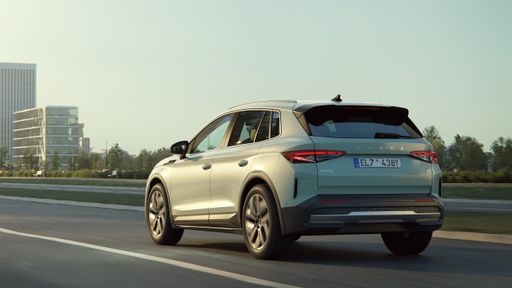 @ Škoda Auto a.s. / Škoda Storyboard
@ Škoda Auto a.s. / Škoda Storyboard
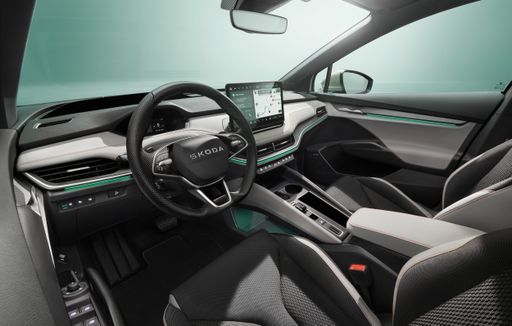 @ Škoda Auto a.s. / Škoda Storyboard
@ Škoda Auto a.s. / Škoda Storyboard
 @ BYD Auto / BYD Global Media
@ BYD Auto / BYD Global Media
|
 @ Škoda Auto a.s. / Škoda Storyboard
@ Škoda Auto a.s. / Škoda Storyboard
|
|
|
|
Costs and Consumption |
|
|---|---|
|
Price
34300 - 39800 £
|
Price
29100 - 45500 £
|
|
Consumption L/100km
0.4 - 1.2 L
|
Consumption L/100km
-
|
|
Consumption kWh/100km
19.9 - 20.5 kWh
|
Consumption kWh/100km
15.2 - 16.5 kWh
|
|
Electric Range
70 - 500 km
|
Electric Range
377 - 573 km
|
|
Battery Capacity
-
|
Battery Capacity
52 - 79 kWh
|
|
co2
0 - 26 g/km
|
co2
0 g/km
|
|
Fuel tank capacity
60 L
|
Fuel tank capacity
-
|
Dimensions and Body |
|
|---|---|
|
Body Type
SUV
|
Body Type
SUV
|
|
Seats
5
|
Seats
5
|
|
Doors
5
|
Doors
5
|
|
Curb weight
1940 - 2147 kg
|
Curb weight
1953 - 2268 kg
|
|
Trunk capacity
425 - 552 L
|
Trunk capacity
470 L
|
|
Length
4775 - 4785 mm
|
Length
4488 mm
|
|
Width
1890 mm
|
Width
1884 mm
|
|
Height
1668 - 1670 mm
|
Height
1608 - 1625 mm
|
|
Max trunk capacity
1440 - 1465 L
|
Max trunk capacity
1580 L
|
|
Payload
410 kg
|
Payload
470 - 531 kg
|
Engine and Performance |
|
|---|---|
|
Engine Type
Plugin Hybrid, Electric
|
Engine Type
Electric
|
|
Transmission
Automatic
|
Transmission
Automatic
|
|
Transmission Detail
CVT, Reduction Gearbox
|
Transmission Detail
Reduction Gearbox
|
|
Drive Type
Front-Wheel Drive, All-Wheel Drive
|
Drive Type
Rear-Wheel Drive, All-Wheel Drive
|
|
Power HP
218 - 324 HP
|
Power HP
170 - 340 HP
|
|
Acceleration 0-100km/h
5.9 - 9.6 s
|
Acceleration 0-100km/h
5.4 - 9 s
|
|
Max Speed
170 - 180 km/h
|
Max Speed
160 - 180 km/h
|
|
Torque
300 - 550 Nm
|
Torque
310 - 679 Nm
|
|
Number of Cylinders
4
|
Number of Cylinders
-
|
|
Power kW
160 - 238 kW
|
Power kW
125 - 250 kW
|
|
Engine capacity
1497 - 1498 cm3
|
Engine capacity
-
|
General |
|
|---|---|
|
Model Year
2024
|
Model Year
2025
|
|
CO2 Efficiency Class
B, A
|
CO2 Efficiency Class
A
|
|
Brand
BYD
|
Brand
Skoda
|
What drive types are available for the BYD Seal U?
The BYD Seal U is available as Front-Wheel Drive or All-Wheel Drive.
The prices and data displayed are estimates based on German list prices and may vary by country. This information is not legally binding.
